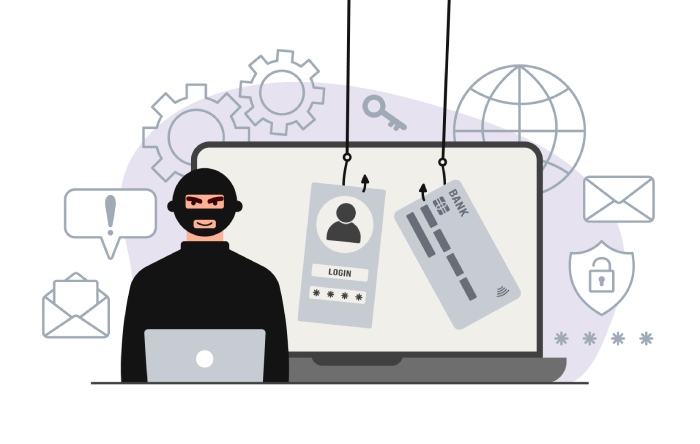Cyberspace provides many avenues for malicious actors to attack, exploit and cause damage to individuals and organizations. Global internet penetration has grown 7.3% percent since 2020, which means that cyberspace is getting larger. SIM Swap fraud prevention, along with anti-phishing solutions, anti-ransomware solutions, and anti-malware tools, can protect users from being exploited in this age of rising internet use.
A massive 92.6% of internet users use their mobile phones to access the internet. With such a rapid rise in global internet penetration and countless mobile phone users, cybercrimes such as phishing and ransomware are becoming spine-breaking day by day. SIM Swap fraud is one of the latest cybercrime developments to add to the long list of cyber threats like phishing and ransomware.
What Is SIM Swap Fraud?
SIM Swap fraud is a form of a cyberattack involving identity theft. It is the fraudulent replacement of SIM cards without the user’s knowledge (which the threat actor leverages for various nefarious purposes). The malicious actor then acquires access and control of the victim’s mobile number in either of the two ways mentioned below.
The first way to obtain control is by swapping the victim’s number with another SIM card on the same network. This nefarious act is carried out by impersonating the victim, calling the mobile service provider in a sophisticated phishing method, and informing them that the SIM card has been misplaced. The service provider subsequently issues a new SIM card for the same number. Another way of gaining access is by requesting Porting Authorization Code (PAC) to move to another network.
Once the attackers get access to the SIM card, they can access all the calls and texts. They can receive the One Time Password (OTP) and other authentication through text to carry out financial transactions illegally.
Why SIM Card Security Matters?
A SIM card is the identity and identifier of any user’s mobile phone. SIM card is the abbreviation for ‘Subscriber Identity Module’ card. The SIM card identifies each user as an individual and distinct subscriber, and that is how users communicate with people on the same or a different network. In most places, users can replace the SIM card and use it in another phone and continue using it. In some areas, however, the SIM card is locked to a specific service provider.
In either case, service providers offer a feature known as SIM swapping. This feature allows users to use a different SIM card with the same mobile number if their device or the SIM card gets lost or damaged.
The SIM cards receive users’ sensitive data to verify and authenticate online services such as 2-factor authentication. Thus, the victim’s authentication authorities lie with the malicious actors in case of an illegal SIM Swap fraud.
The Phases Of SIM Swap Fraud
SIM Swap fraud is generally a well-planned, step-by-step process. Here are the major stages in a SIM Swap fraud case.
- Social engineering: Social engineering is a term in cybersecurity that means accessing information by exploiting human psychology through deception and manipulation. A majority of SIM Swap cards begin with phishing emails that influence users to divulge sensitive information. Such disclosed information and social media data allow malicious actors to effectively collect details about the user for impersonating them. They gather enough information about the victim from various social media handles and the internet to exploit them.
- SIM Swap: Once the adversary gains enough insight, they call the service provider and impersonate the victim. They request a new SIM card of the same number to be activated, claiming that the old SIM card is lost or damaged. Alternatively, they can ask to port the number to a completely different service provider by requesting a PAC (Porting Authorization Code). Phishing is also one of the novel ways attackers use to manipulate an employee of the network service provider or the victim to reveal specific details that may allow them to access the texts received by the victim. Such vulnerabilities call for the need for anti-phishing solutions and email phishing protection.
- Fraud: Once the attacker has gained access to the victim’s mobile number, they can receive calls and texts meant for the victim without their knowledge. Through such communication, the attacker can also access two-factor authentication. Such access is not limited to the user’s social media accounts but includes financial ones as well.
How To Prevent SIM Swap Fraud?
Observing the necessary safeguards listed below is essential for one to stay away from the clutches of SIM Swap fraud.
- Be cautious of sharing information on social media.
- Be creative with account recovery answers.
- Do not use the same passwords across multiple accounts.
- Deploy anti-malware tools to protect information assets.
- Protect your information assets using robust anti-phishing solutions.
- Shield data with anti-ransomware solutions.
- Secure emails with email phishing protection solutions.
Symptoms Of SIM Swap Fraud?
The following are the primary symptoms of a SIM Swap fraud.
- Loss of connectivity
- Suspicious activity
- Inability to access social media accounts
- Repeated nuisance calls or messages
Best Solutions To Worst Scenarios
The below are the primary actions you must take if you suspect a SIM Swap fraud attempt.
- Check and alert banks and credit card companies.
- Report to the service providers.
- Check all social media accounts and report in case of any suspicious activity.
- Change all passwords and security questions as soon as you can.
- Report to the local cybercrime unit or law enforcement units.
Final Words
As mobile devices establish identity in a digital ecosystem and contain private information, mobile numbers should also be considered sensitive enough to be protected. In today’s times, one must deploy sophisticated security layers such as anti-phishing solutions, anti-ransomware solutions, and email phishing protection tools to ensure protection from malicious attempts of threat actors trying to misuse sensitive information for their ill intentions.



